Crafting the perfect guacamole doesn’t have to be a time-consuming or complicated process. A simple guacamole recipe can easily elevate any meal, providing a delicious and nutritious boost that complements a variety of dishes. Guacamole recipe, with its rich texture and versatile flavor profile, has earned its place as a beloved dip and topping worldwide. The key to a great guacamole lies in its simplicity and the freshness of its ingredients, making it an ideal choice for both beginners and seasoned cooks looking for a quick and satisfying culinary addition.
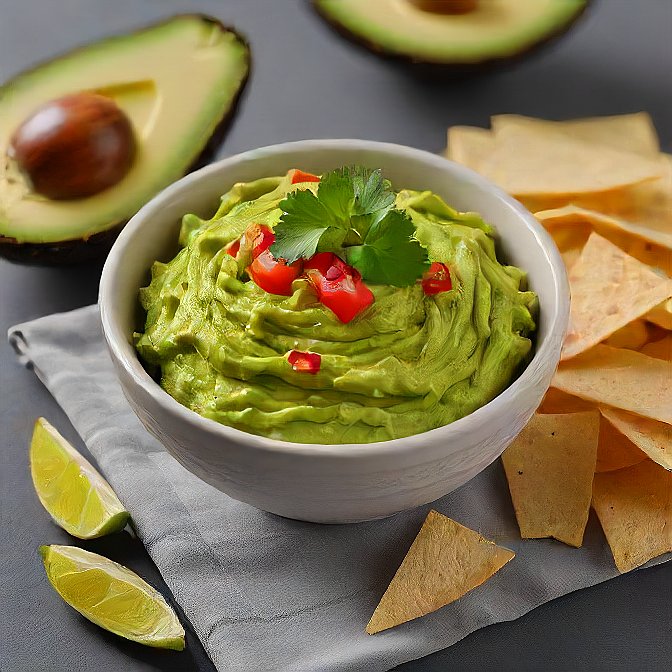
This article will guide you through the steps of creating a simple guacamole recipe, covering everything from the selection of basic ingredients to the best methods for combining them into a flavorful blend. Readers will learn how to properly prepare avocados, the cornerstone of any guacamole recipe, and how to chill and serve the finished product for optimal taste. Additionally, tips on storing and maintaining freshness will ensure that your guacamole remains delicious for as long as possible. Whether you’re hosting a party or just looking for a quick snack, this guide will equip you with the knowledge to make a delightful guacamole in minutes.
Basic Ingredients for Guacamole Recipe
Creating a delectable guacamole recipe starts with gathering the right ingredients. Each component plays a crucial role in crafting a guacamole that is not only tasty but also authentic and fresh. Here’s what you’ll need:
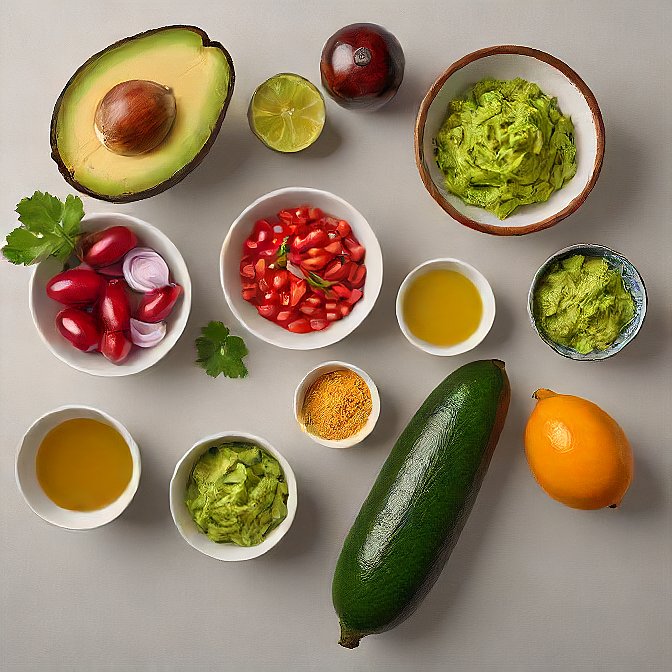
Avocados
The foundation of any guacamole is ripe avocados. They should feel slightly soft when gently pressed but not mushy. Ripe avocados will mash easily, allowing for a creamy texture that’s perfect for dipping.
Lime Juice
Freshly squeezed lime juice is essential for adding a zesty brightness to your guacamole recipe. It not only enhances the flavor but also helps in preserving the vibrant green color of the avocados, preventing them from browning too quickly.
Onions and Tomatoes
For a bit of crunch and additional flavor, finely chopped onions are perfect. Yellow onions are commonly used in Mexico, but red onions can also be a great alternative, offering a milder taste. Adding diced Roma tomatoes, which are less juicy, ensures your guacamole remains thick and not watery.
Seasonings: Salt and Garlic
A pinch of flaky sea salt is critical for bringing all the flavors together. It enhances the natural tastes of the other ingredients without overpowering them. Garlic is optional, depending on personal preference. A small amount can add a nice depth to the guacamole recipe, but it can be omitted for those who prefer a milder flavor.
By combining these simple, high-quality ingredients, you can easily prepare a classic guacamole that will impress any guest or satisfy any snack craving with its fresh, robust flavors.
Preparing the Avocados
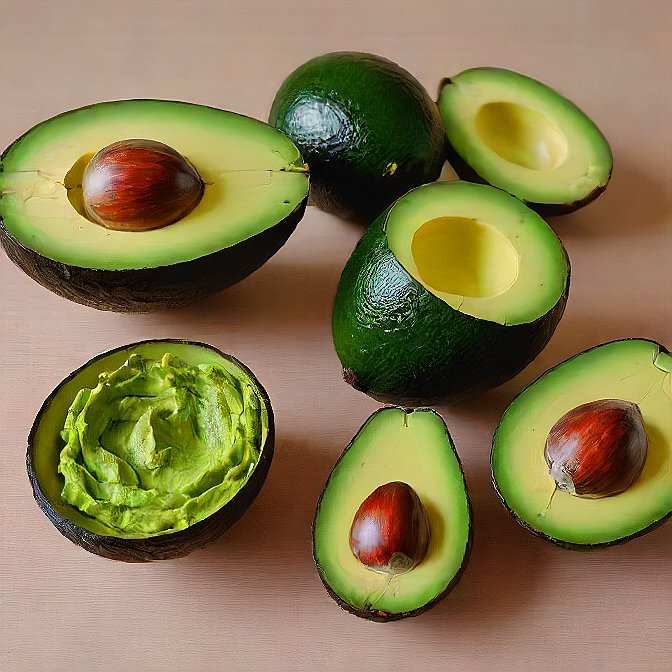
Selecting Ripe Avocados
The first step in preparing a simple guacamole recipe is selecting the right avocados. They should be ripe but firm, with a slight give when pressed gently with the palm of the hand. A ripe avocado will typically have a dark green to dark purple color, depending on the variety, such as the commonly used Hass avocados. It’s crucial to avoid avocados that are too soft or mushy, as they are overripe. Additionally, the stem should be dry and loosen easily; if it does not, the avocado is likely underripe. If the stem pulls away easily and the area underneath is green, the avocado is perfect for guacamole recipe.
Peeling and Pitting
Once the right avocados are selected, the next steps are peeling and pitting them. Start by cutting the avocado in half lengthwise around the pit. To remove the pit, gently twist the halves in opposite directions and lift away one half from the pit. For safety and ease, strike the pit with a knife blade and twist to remove. To peel, simply scoop out the flesh with a spoon, or peel back the skin if it comes away easily. This method helps in preserving the most flesh.
Mashing Techniques
After peeling and pitting, place the avocado flesh in a bowl. For a smooth guacamole, use a fork or potato masher to mash the avocados until they reach the desired consistency. For those who prefer a chunkier texture, a less vigorous mashing is recommended. Some prefer to use a wire masher or even press the avocado through a roasting rack for evenly diced chunks. The texture of the guacamole recipe can greatly influence the final taste and presentation, so it’s important to mash according to personal preference or the recipe’s requirement.
By carefully selecting, peeling, pitting, and mashing the avocados, one ensures that the base of the guacamole is perfectly prepared for the addition of other ingredients. This foundation is crucial for creating a delicious and visually appealing guacamole recipe.
Combining All Components
Once the avocados are prepared, combining all the components effectively is crucial for crafting the perfect guacamole recipe. Here’s how to blend the ingredients:
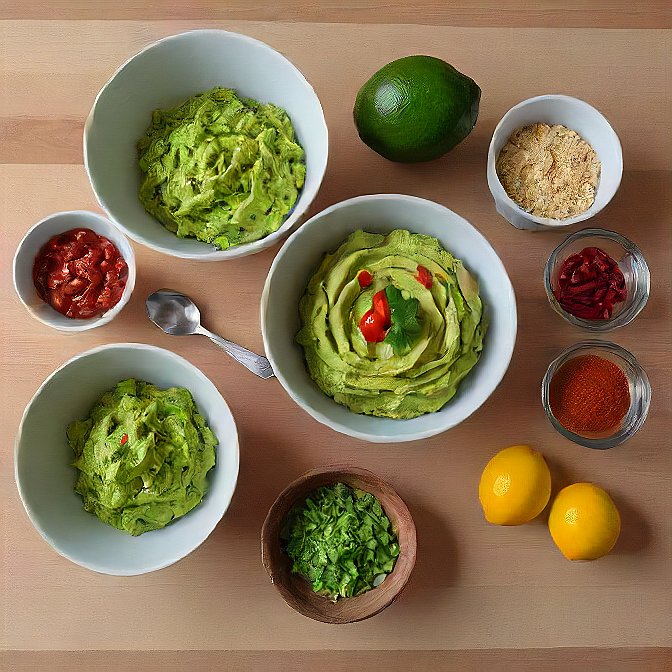
Mixing Diced Onions and Tomatoes
Start by adding finely diced red onions and tomatoes to the mashed avocado. Red onions provide a milder taste which complements the creamy texture of the avocados, while the Roma tomatoes add a refreshing crunch without making the guacamole watery. For those who enjoy a bit of heat, jalapeños can be prepared by removing the stem and slicing them in half. Depending on one’s preference for spice, they can either leave some seeds intact for extra heat or remove them for a milder flavor. Dice or finely mince the jalapeños and add them to the bowl.
Stirring in Lime Juice and Seasonings
Incorporate the juice of fresh Mexican limes, which typically yield about 1 to 2 tablespoons of juice each. Fresh lime juice is essential as it significantly enhances the flavor compared to bottled juice. Next, add a homemade seasoning blend which might include onion powder, garlic powder, cayenne pepper, and salt. Stir in 2 tablespoons of freshly chopped cilantro for a burst of freshness. Mix all these ingredients thoroughly to ensure the flavors meld together beautifully.
After combining, one can taste test the guacamole recipe and adjust the seasoning according to preference. Additional lime juice, salt, or cilantro can be added to perfect the taste. This step not only ensures that all the flavors are well incorporated but also allows for personal adjustments making the guacamole suited to individual tastes.
Once mixed, the guacamole recipe should be chilled in the refrigerator to allow the flavors to blend harmoniously. Covering the guacamole and letting it sit for about 30 minutes is recommended to enhance the overall taste and richness of the dip.
Chilling Your Guacamole Recipe
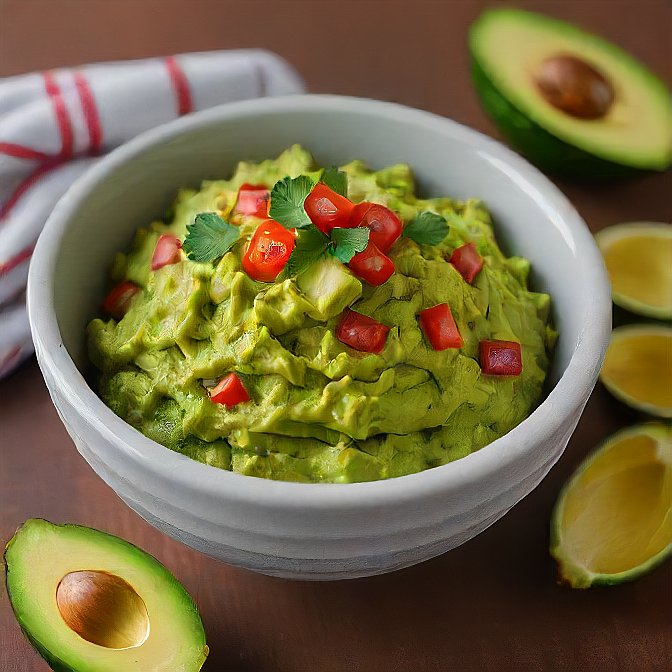
Importance of Chilling
Chilling guacamole recipe is a crucial step in enhancing its flavor and texture. By allowing it to rest in the refrigerator, the various ingredients meld together, creating a harmonious blend. This chilling period not only intensifies the flavors but also improves the guacamole’s consistency, making it more enjoyable and cohesive. An added benefit of chilling is the reduction in the oxidation process. When guacamole is exposed to air, it begins to brown due to the oxidation of avocados. However, proper chilling techniques, such as covering the surface with plastic wrap or a thin layer of lime juice, can significantly slow this process, preserving the vibrant green color and fresh taste.
How Long to Chill for Best Taste
For optimal flavor and texture, guacamole recipe should be chilled in the refrigerator for at least 30 minutes before serving. This duration allows the flavors to blend nicely and the texture to stabilize. For those planning ahead, guacamole can also be made in advance and stored in the refrigerator. To maintain its freshness and prevent browning, cover the guacamole with a thin layer of lime juice or water, then tightly seal it with plastic wrap making sure it directly touches the surface of the guacamole.
This barrier between the guacamole recipe and the air minimizes oxidation. When ready to serve, any excess liquid can be drained or mixed back in, and the guacamole will appear fresh and vibrant. Using these methods, guacamole can be prepared several hours ahead of time, making it a convenient option for gatherings or meals planned in advance.
Serving Methods
Traditional Pairings
Guacamole recipe is traditionally enjoyed with a variety of pairings that enhance its rich, creamy texture and vibrant flavors. Classic tortilla chips are the go-to choice for a simple and delightful guacamole experience. For those seeking a healthier option, vegetable sticks such as carrots, celery, and bell peppers provide a crunchy contrast to the dip’s creaminess. Pita chips and toasted bread slices also make excellent companions, offering a different texture and flavor profile.
For a heartier meal, guacamole complements Mexican dishes beautifully. It can be dolloped on top of tacos, burritos, and enchiladas or used as a flavorful addition to burgers and sandwiches. In more creative uses, guacamole recipe serves as a replacement for traditional condiments, adding a unique twist to dishes like grilled cheese or BLTs.
Unique Serving Ideas
To elevate the presentation and experience of serving guacamole, consider these unique ideas:
- DIY Guacamole Bowls: For an eco-friendly and charming serving option, use halved and hollowed bell peppers, small pumpkins, or even avocado skins as individual serving bowls. This not only adds a fun element to your table but also reduces waste.
- Edible Serving Dishes: Create taco bowls using inverted muffin tins to mold tortillas into bowl shapes, which can then be filled with guacamole. These edible dishes are perfect for parties, allowing guests to enjoy their guacamole without the need for additional plates.
- Guacamole Bar: Set up a guacamole bar where guests can customize their servings. Provide a base of classic guacamole and offer a variety of toppings like diced tomatoes, crumbled cheese, bacon bits, and spicy jalapeños. This interactive setup is perfect for gatherings and lets everyone craft their perfect bite.
- Creative Platters: Serve guacamole in a large margarita glass or arrange it on a platter surrounded by a variety of dippers like crispy plantain chips, taro chips, and assorted crudites. This not only makes for a visually appealing setup but also caters to different taste preferences.
These serving methods showcase guacamole’s versatility and allow for creativity in presentation, making it a standout dish at any dining occasion. Whether opting for traditional pairings or exploring unique serving ideas, guacamole recipe remains a beloved choice that pairs wonderfully with a myriad of flavors and textures.
Storing and Maintaining Freshness
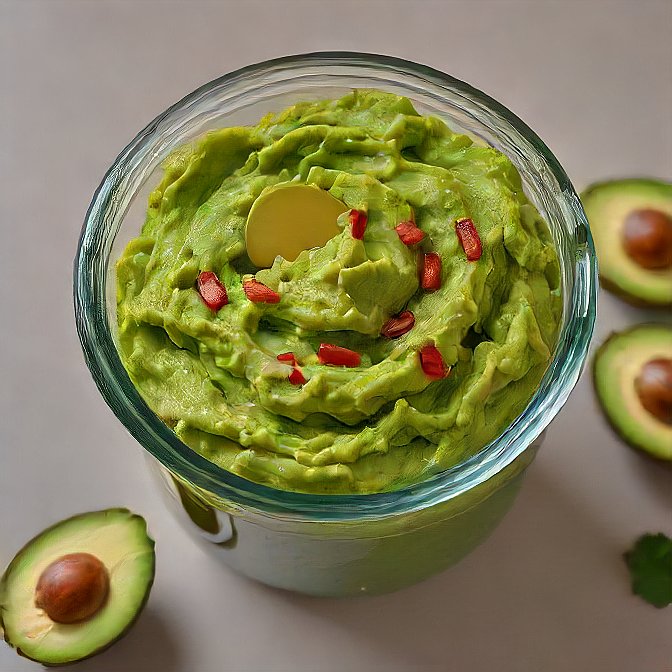
Proper Storage Techniques
To ensure that guacamole remains fresh and vibrant, storing it correctly is crucial. One should place the guacamole in an airtight storage container to minimize exposure to air. Using a bowl covered tightly with plastic wrap is also effective. Before sealing, use a spoon to flatten the surface of the guacamole, removing any air bubbles, which are detrimental as they promote oxidation.
Prevention Methods for Browning
A novel and effective way to prevent guacamole recipe from browning involves using a layer of water. After smoothing the guacamole’s surface, add about a half-inch of water, ensuring it covers the entire surface. This layer of water acts as an oxygen barrier, significantly reducing the browning process. The water should be cool or at room temperature and must be poured gently to maintain the integrity of the guacamole underneath.
For those who prefer not using water, applying a thin layer of lemon, lime, or vinegar can also create a barrier against oxygen. Alternatively, spreading a layer of sour cream can serve a similar purpose, especially if the tangy flavor complements the guacamole. Another method includes pressing a layer of plastic wrap directly onto the surface of the guacamole recipe, ensuring it’s in full contact and that there are no air pockets. This method may still leave a minimal amount of browning, but any discoloration can be stirred into the guacamole before serving, typically without noticeable difference in taste or appearance.
To enjoy the guacamole later, simply remove it from the refrigerator, gently pour off any water or other protective layer, and give the guacamole recipe a good stir. These steps help maintain the freshness and vibrant green color, making the guacamole appealing and tasty even after storage.
Conclusion
Through this article, we’ve explored the simplicity and joy of crafting a delightful guacamole using just a handful of fresh ingredients. The journey from selecting the perfect avocados to the final taste test reveals that making guacamole is not just about mixing ingredients but also about embracing the rich flavors and textures that each component brings. The careful preparation of avocados, the zest of lime juice, and the crunch of onions and tomatoes culminate in a dip that is as versatile as it is delicious, proving that great flavor often lies in simplicity.
The significance of proper chilling, creative serving methods, and efficient storage practices cannot be overstressed, as they ensure the guacamole maintains its appeal and taste over time. Whether serving it as a classic dip, a topping for heartier dishes, or presenting it in unique, eco-friendly ways, guacamole remains a testament to the beauty of combining simple ingredients to create something truly satisfying. Let this guide inspire not only your next culinary adventure but also an appreciation for the simple joys of homemade guacamole.
FAQs
1. What ingredients are used in traditional guacamole?
Authentic guacamole is typically prepared with a few basic ingredients: avocados, onions, tomatoes, cilantro, jalapeño peppers, lime juice, garlic, and salt.
2. Can I use something other than lime juice in guacamole?
Yes, you can substitute lime juice with apple cider vinegar, which has a slightly sweet and tangy flavor. Use about half the amount of vinegar as you would lime juice. Alternatively, orange juice can be used for a sweet and citrusy flavor, adding a unique twist to the guacamole.
3. How long does homemade guacamole stay fresh?
Homemade guacamole can stay fresh in the refrigerator for about three to four days if properly prepared and stored. If you choose to freeze it, guacamole can last between three to four months.
4. Is guacamole simply mashed avocado?
While the base of guacamole is mashed ripe avocados and salt, traditional recipes also include lime juice, cilantro, onions, and jalapeños. Some modern variations might include additional ingredients like sour cream, tomatoes, basil, or peas.

Guacamole Recipe
Ingredients
- 3 ripe avocados
- 1 lime juiced
- 1/2 teaspoon salt
- 1/2 teaspoon ground cumin
- 1/2 teaspoon cayenne pepper optional for spice
- 1/2 medium onion diced
- 2 Roma tomatoes seeded and diced
- 1 tablespoon chopped cilantro
- 1 clove garlic minced
Instructions
- Cut avocados in half, remove pits, and scoop flesh into a mixing bowl.
- Mash avocados with a fork until smooth or slightly chunky, depending on preference.
- Add lime juice, salt, cumin, and cayenne pepper (if using) to the mashed avocado and mix well.
- Gently stir in diced onions, tomatoes, cilantro, and minced garlic.
- Taste and adjust seasoning if needed.
- Serve immediately, or cover with plastic wrap directly on the surface of the guacamole to prevent oxidation and refrigerate until ready to serve.

Leave a Reply